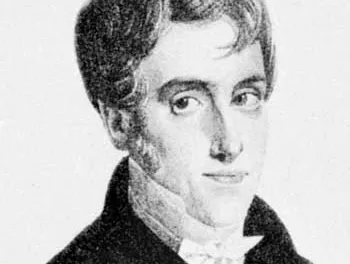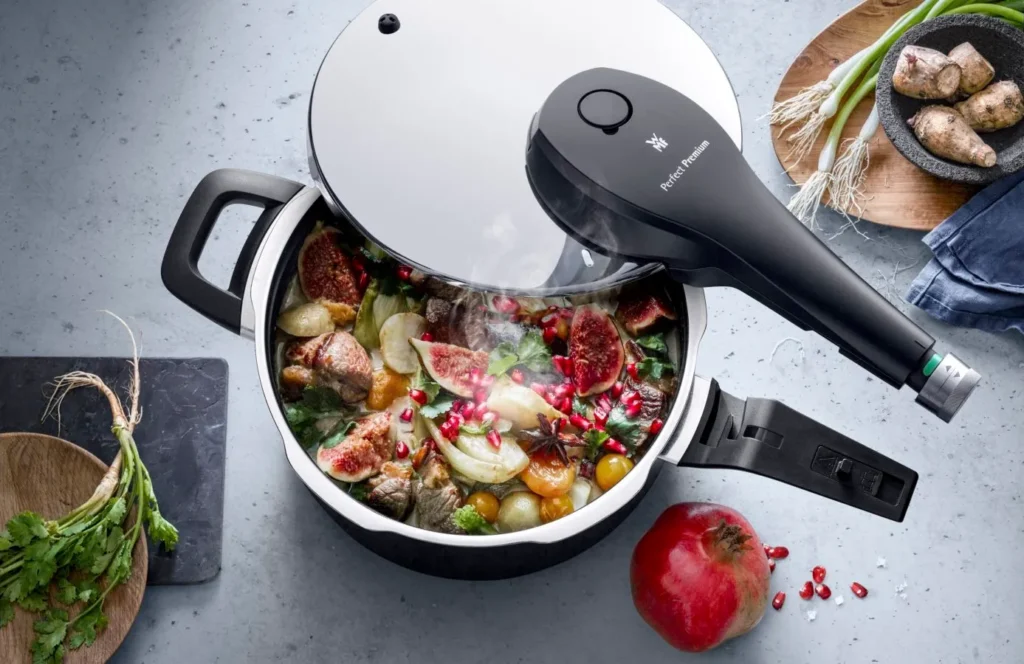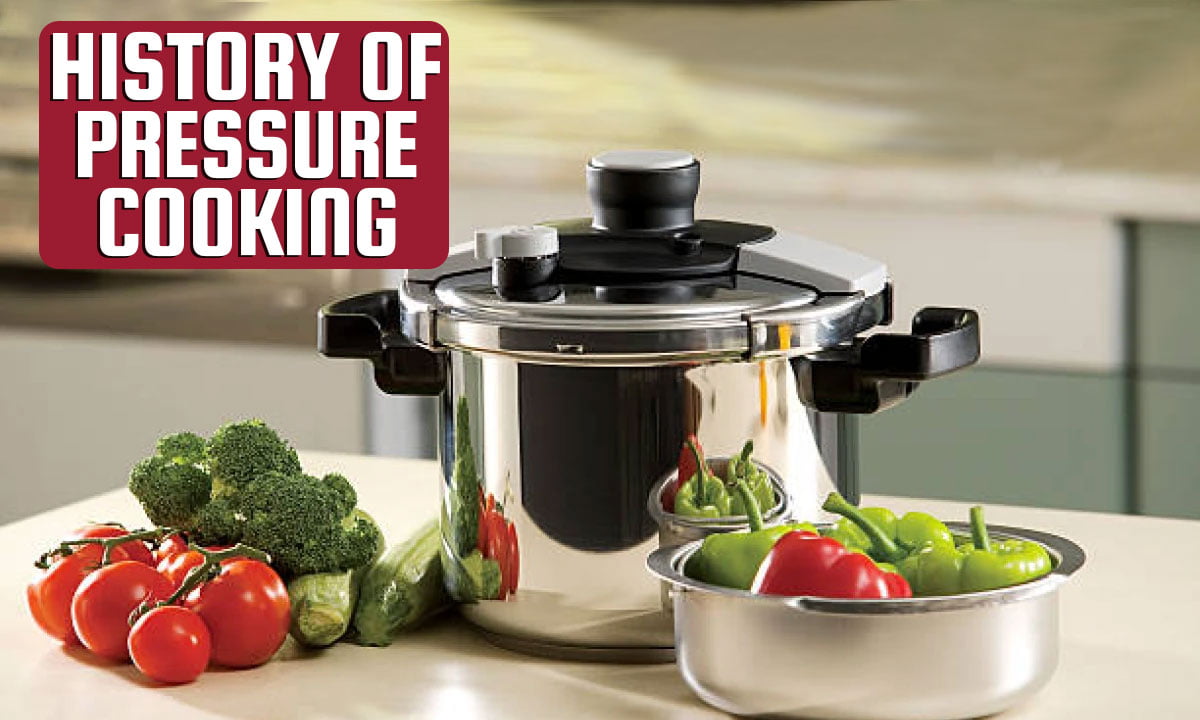The History of Pressure Cooking
Denis Papin’s Steam Digester (1679):

French scientist Denis Papin introduced the “Steam Digester” aiming to expedite food preparation by utilizing internal steam pressure to elevate water’s boiling point, effectively speeding up cooking.
Nicolas Appert’s Innovation (1795):
In response to a French military food preservation challenge, baker Nicolas Appert devised a canning method. This process involved placing food in clean jars, sealing them with corks, and boiling, earning recognition from Emperor Napoleon Bonaparte.
The Emergence of Pressure Canning:
By the early 1900s, pressure canning evolved significantly. National Presto Industries manufactured various-sized “canner retorts” to meet demand. The US Department of Agriculture endorsed pressure canning as the safest way to store low-acid foods, promoting its widespread adoption.
Table of Contents
The Evolution of Home Pressure Cooking:
Revolutionary Advances in Pressure Cooker Design (1938 – 1941):

Alfred Vischler’s “Flex-Seal Speed Cooker” marked a significant leap in home pressure cooking in 1938. However, it was the introduction of the “Presto” pressure cooker at the 1939 New York World’s Fair that captured widespread attention. Its innovative sliding lid design revolutionized the cooking experience, quickly making “Presto” synonymous with pressure cooking across the US.
Pressure Cookers Amidst World War II (1941 – 1945):
During World War II, aluminum scarcity due to war efforts restricted pressure cooker production. Steel, allocated by the War Production Board, facilitated the making of Pressure Canners for essential Victory Garden and canning programs. The cooker’s popularity surged as women joined the defense workforce, simplifying meal preparation. Lending pressure cookers became common among neighbors due to limited availability until the war’s end, leading to an extensive waiting list post-war.
Post-War Challenges and Innovations (1950s – 1960s):
Stamped aluminum models in the 1950s and improved stainless steel technology led to the introduction of durable, aesthetically pleasing stainless steel pressure cookers. However, an influx of inferior quality cookers and misuse tarnished their reputation, causing a decline in popularity by the late 1950s.
Revival and Reinvention (1960s – 1980s):
Through the 1960s and 1970s, pressure cooker companies endured by enhancing safety features and appearance. The inclusion of interlocking covers and overpressure devices mitigated safety concerns, reigniting interest. Fresh recipe guides in the 1980s attracted new buyers, while Asian and European markets influenced the US market with diverse styles and luxury models.
Contemporary Resurgence (1990s – Present):
Foreign companies introduced a range of styles and features in the US market during the 1990s, but the traditional weighted valve control maintained its dominance. Today’s pressure cookers, complying with established safety and cooking standards, are witnessing a resurgence. Recognized for their ability to prepare quick, wholesome meals, pressure cookers continue to captivate the culinary landscape.
What are the main advantages of pressure cooking?
It’s not as easy as it used to be to get food on the table. Concerns about health, nutrition, and food safety need to be carefully matched with what the family likes to eat. We also have a hard time with time because we have busy dual-income homes and other activities that get in the way of our plans. The pressure cooker is not a new idea, but it’s easy to see why it’s becoming popular again. We’ll have more time to do other things, and the food will be of the quality we remember and want to feed our family today.
Pressure cooking is something that a lot of baby boomers don’t understand. A pressure cooker is just a pot with a lid that doesn’t let air in. It builds steam inside to temperatures above the boiling point, which cooks food in one-third to one-tenth the time it takes to cook normally. Pressure cookers today are safe to use and much simpler than they used to be.
In just a few minutes, you can cook delicious recipes with meat, chicken, fish, veggies, rice, and beans. The pressure cooker can even make tasty cakes in a lot less time than other ways.

Advantages of Using a Pressure Cooker
| Easy to Use | Today’s electric multi-cookers are designed for simplicity, ensuring easy pressure cooking. The Proctor Silex pressure cooker utilises True Slow technology, preventing overcooking with a gradual temperature rise. |
| Reduced Cooking Time | Utilizes steam and sealed pot heat for rapid, rich flavor production, cooking food up to 70% faster than traditional methods. From frozen chicken in 5 minutes to tender pot roasts in under an hour. |
| Versatile | Beyond steam pressure cooking, it offers slow cooking (high/low), sautéing, and food warming. Capable of preparing rice, yogurt, frittatas, and even cheesecake. |
| Healthy and Flavorful | Shorter cooking preserves nutrients; a study in The Journal of Food Science showed a pressure cooker retaining 90% of broccoli’s vitamin C. It efficiently cooks succulent pot roasts using budget-friendly meat cuts. |
| Quieter | The Proctor Silex model releases steam quietly, offering both quick and natural release options. Minimal noise, unlike traditional stovetop models, with minimal hissing or whistling during operation. |
| Easy to Clean and Store | Compact design for easy countertop placement and cabinet storage. Dishwasher-safe nonstick pot ensures effortless cleaning after use. |
| Saves Time and Energy | Eliminates multiple pots and pans, allowing quick meal prep even on busy days. Efficiently cooks various dishes, from beef chili to gourmet stews, saving both time and energy. |
Understanding Pressure Cooker Mechanics:
Core Components:
Pressure cookers operate on a fundamental principle shared across various models. They encompass essential components illustrated in the accompanying images. Always refer to your cooker’s manual for precise operational guidelines.
Pressure Regulator:
The pivotal pressure regulator maintains and stabilizes the internal pressure, ensuring optimal cooking conditions.
Vent Pipe and Pressure Valve:
Connected to the vent pipe, the pressure valve functions to release excess pressure, averting potential hazards.
Air Vent/Cover Lock:
Automatically expels air and provides visual pressure indication. As pressure escalates, the lock engages by sliding up and securing the cover via the LOCK PIN.
Sealing Ring:
During cooking, the sealing ring creates a secure seal between the cooker’s cover and body, preventing pressure leakage.
Over Pressure Plug:
A safety mechanism that triggers automatic pressure release if the vent pipe encounters blockage, preventing undue pressure buildup.
Basket or Cooking Rack:
Utilized to elevate food above the cooking liquid, allowing separate cooking without flavor mingling. Omitting the rack or basket permits flavor blending during cooking, as desired.
How to use Pressure Cooker
You can use these simple steps to learn how to use a pressure cooker. However, they are not meant to replace the directions that came with your pressure cooker model from the maker.
1. Check the plan for exact steps and how long to cook something. You can use the food rack or pan if you want to. Add the food and the right amount of liquid to the pressure cooker.
2. Before you close the lid, hold it up to the light and check that you can see through the air pipe.
3. Follow the directions on the pressure cooker’s box to put the lid on firmly.
4. Put the pressure gauge on the vent pipe. Use a high hob temperature setting to heat the pressure cooker up to 15 pounds of pressure.
It’s important to note that air is leaving the cooker through the air exit as pressure builds inside. As soon as the air is gone, the cover lock will go up and stay there until the pressure is safely lowered.
For some models, 15 pounds of pressure is reached when the pressure valve starts to rock OR when you see or hear a slow, steady release of steam OR when the pressure display hits 15 pounds of pressure. Turn down the heat so that the 15-pound pressure stays the same. As soon as 15 pounds of pressure is met, the cooking time starts.
5. If the recipe says “cook 0 minutes,” only cook the food until the pressure of 15 pounds is reached, and then let the cooker cool down the way it says to. Cook for the exact amount of time called for in the recipe and release the air as told.
At the point where the recipe says “let pressure drop of its own accord,” take the pot off the heat and let it cool down on its own.
As soon as the recipe says “cool cooker at once,” do so right away in a sink with cold running water or in a pan of cold water until the pressure is gone. Following the manufacturer’s directions is important if your model has a quick cool release button.
6. When the air vent/cover lock has dropped, the pressure drops all the way to zero. Take off the pressure gauge. Then take the lid off the pressure cooker and serve the food.
Final Thoughts on Pressure Cooking
The journey of pressure cooking, from its earliest roots with Denis Papin’s pioneering “Steam Digester” to Nicolas Appert’s innovative canning method, showcases a rich history. The evolution of pressure canning and home cooking witnessed significant milestones, notably Alfred Vischler’s “Flex-Seal Speed Cooker” and the introduction of “Presto” at the 1939 New York World’s Fair.
World War II’s influence on pressure cookers and the subsequent challenges in the 1950s marked periods of change. However, the resilience and innovation of manufacturers paved the way for a resurgence, embracing safety enhancements and fresh culinary influences. Today’s pressure cookers, incorporating diverse features while complying with stringent standards, reflect a renaissance in this culinary art.
The numerous advantages of pressure cooking, including time and cost savings, nutrient retention, and enhanced safety features, underscore its relevance in modern kitchens. Understanding the mechanics and operational guidelines empowers users to prepare delicious, wholesome meals efficiently.
In essence, the journey of pressure cooking, laden with historical milestones and technological advancements, continues to captivate culinary enthusiasts. Its blend of tradition, innovation, and convenience ensures a significant place in contemporary cooking methodologies, catering to the evolving needs of culinary enthusiasts worldwide.
Steaming vs. Pressure Cooking:
Steaming cooks food with hot steam at normal pressure, preserving most nutrients but taking longer. Pressure cooking uses high-pressure steam to cook food much faster while retaining flavors and nutrients more effectively.
Are Pressure Cookers Dangerous?
Modern pressure cookers are safe to use, equipped with multiple safety features like pressure release valves and locking lids. Following the manufacturer’s instructions ensures safe operation.
What are the Health Benefits of Cooking with a Pressure Cooker:
Pressure cooking preserves more nutrients compared to traditional cooking methods, uses less oil, and helps retain the natural flavors of food, making meals healthier and more nutritious.
Does a Pressure Cooker Destroy Nutrients?
No, pressure cooking actually preserves more nutrients than boiling or steaming because of the shorter cooking time and minimal water use, which reduces nutrient loss.

